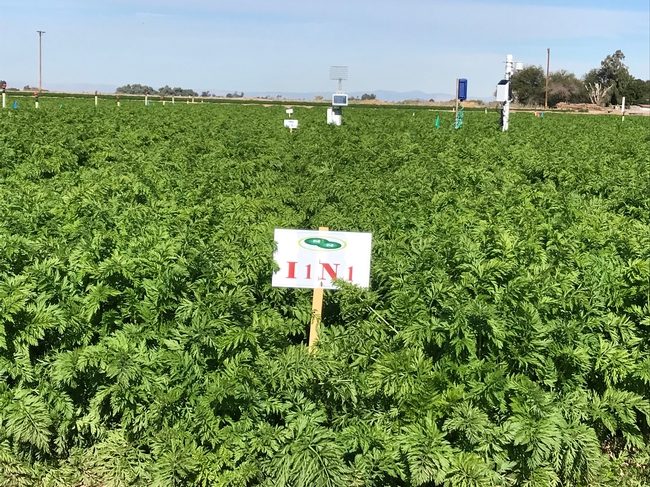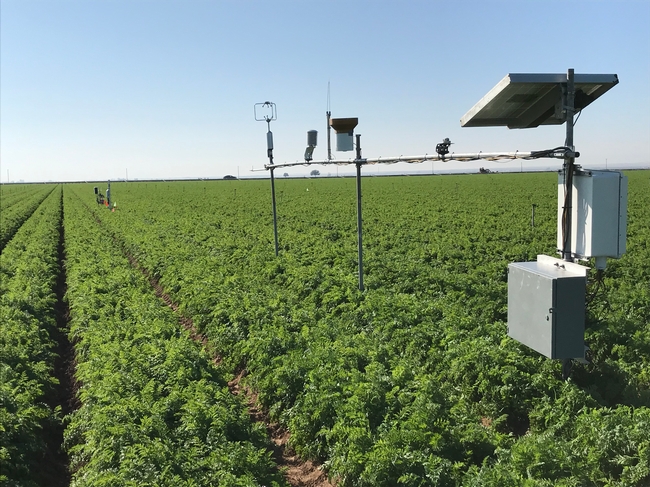New research fills gap on best practices for California carrot production
One doesn't need to be a seasoned farmer to know that growing conditions in Canada are completely different than those found in the low desert of California.
And yet, for many years, studies conducted in Canada were used to generate nitrogen uptake data for the California carrot production system, so growers managed their fields based on their own experiences – and that research conducted thousands of miles to the north.
Carrots had been among the crops grown in California that did not have site-specific data to suggest the best source, rate, timing and placement of nitrogen, in the highly variable cropping seasons and locations throughout the state. That's why new information – based on local research and published in August – is invaluable to farmers in Imperial and Kern counties, where the majority of the carrots in California are grown.
Two years of data from two experimental trials at UC Agriculture and Natural Resource's Desert Research and Extension Center – as well as from 10 commercial fields – produced key recommendations for farmers to make the most of their irrigation and nitrogen applications.
“The point is we developed information in your field, based on your practices, your climate, your production system – and this is what is really happening,” said Ali Montazar, UC Cooperative Extension irrigation and water management advisor for Imperial County. Montazar conducted the study alongside Daniel Geisseler, UCCE nutrient management specialist at UC Davis, and Michael Cahn, UCCE irrigation and water resources advisor for Monterey County.
With reliable data gathered under real-world conditions, Montazar said growers now have solid reference points for when – and at what rate – to irrigate and apply fertilizers in the low desert environment. One of the key findings, for example, was that the carrots' nitrogen uptake is generally low in the first 40 to 50 days, so growers are advised to limit their fertilizer application during that period.
Then, by tailoring those basic guidelines to their own site-specific situation and optimizing their practices, growers can maximize the amount of nitrogen taken up by the carrots – and minimize the amount that is leached out.
“Improving irrigation and nutrient management in the desert production system is what local growers are themselves trying to achieve. With improving efficiency and reducing nutrient leaching, we can improve the quality of water in the Salton Sea,” said Montazar, noting the longstanding challenges of reducing contaminants from irrigated lands to protect its unique ecosystem and wildlife.
While contamination of groundwater is not a critical issue in the desert, the best practices in this study can also help carrot growers in parts of California where nitrogen leaching into groundwater and drinking water supplies is a greater concern.
Montazar is currently leading a team in studying carrot-growing management practices under slightly different conditions in Kern County, with the hopes of publishing findings in late summer 2022.
The Imperial County study, “Spatial Variability of Nitrogen Uptake and Net Removal and Actual Evapotranspiration in the California Desert Carrot Production System,” is published in the journal Agriculture, and can be found at https://doi.org/10.3390/agriculture11080752. Findings and recommendations also appear in Progressive Crop Consultant: https://progressivecrop.com/2021/09/new-knowledge-based-information-developed-to-enhance-water-and-nitrogen-use-efficiency-in-desert-fresh-market-carrots/.
Funding for this study was provided by the California Department of Food and Agriculture's Fertilizer Research and Education Program, as well as the California Fresh Carrots Advisory Board.



